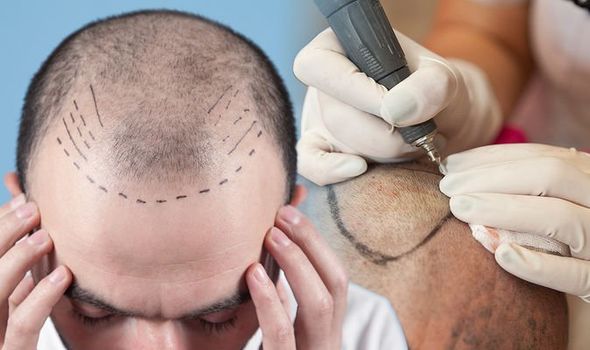Peyronie’s Disease and Exploring Treatment Options, including Penile Vacuum Pumps

Peyronie’s disease is a urological condition which is characterized by the development of fibrous plaques within the penis. These plaques cause penis to bend significantly. This penile curvature may even be associated with pain and difficulties while having erections and sexual intercourse. To find the appropriate treatment options it’s important to have a clear understanding about this issue. One of the potential treatment options for this aliment is penile vacuum pumps. In this article, we will try to understand this condition even more and look at some of the effective treatment options including penile vacuum pumps.
Contents
Understanding Peyronie’s Disease:
Peyronie’s disease has a complex aetiology, and the exact cause remains unclear. However, it is commonly believed to be a result of trauma or injury to the penis, genetic predisposition, autoimmune factors, and microvascular abnormalities. The condition typically presents with the formation of fibrous plaques in the tunica albuginea, a thick fibrous layer that surrounds the corpora cavernosa of the penis. These plaques can lead to penile curvature, pain during erection, and difficulties with sexual activity.
Peyronie’s Disease Treatments:
The management of Peyronie’s disease requires a comprehensive approach that aims to address the symptoms, prevent further progression, and improve sexual function. Treatment options can vary depending on the severity of the condition and the individual’s specific needs. Here are some commonly used treatments:
Medications:
Oral Medications: Certain medications, such as vitamin E, potassium para-aminobenzoate, and tamoxifen, have been used to treat Peyronie’s disease. However, the effectiveness of these medications is still a subject of debate and may vary from person to person.
Injections:
Intralesional Injections: Injections of medications directly into the fibrous plaques have shown promise in reducing plaque size and improving penile curvature. Collagenase clostridium histolyticum (CCH) injections, which break down collagen, have been approved for the treatment of Peyronie’s disease.
Extracorporeal Shock Wave Therapy (ESWT):
ESWT involves delivering high-energy shock waves to the affected area. Shockwave therapy for Peyronie’s disease aims to break down the fibrous tissue, improve blood flow, and stimulate the body’s natural healing processes. ESWT has demonstrated effectiveness in reducing curvature and improving symptoms. In recent years the popularity of this treatment procedures has increased massively. Unfortunately, not all clinics provide this therapy. But MansMatters does, as it is a men’s health clinic situated in London which specializes in treating men’s sexual issues including PD using non-invasive treatments like shockwave therapy, EMTT, NanoVi and Tesla Chair.
Surgery:
Surgical interventions are considered in cases of severe curvature or when conservative treatments have not provided satisfactory results. Surgical procedures may involve plaque incision/excision, grafting techniques, or penile prostheses. It is important to discuss the potential risks and benefits with a urologist.
Penile Vacuum Pumps: A Non-Invasive Treatment Option:
Penile vacuum pumps, also known as penile erection pump, have gained recognition as a non-surgical and non-invasive treatment option for Peyronie’s disease. These devices consist of a cylinder that is placed over the penis and a pump that creates a vacuum, drawing blood into the penis and causing an erection. The erection is subsequently kept in place by placing a constriction ring at the base of the penis.
The role of penile vacuum pumps in managing Peyronie’s disease can be significant:
Regular use of a penile vacuum pump can help stretch the fibrous tissues, reducing curvature over time. The vacuum created by the device provides consistent traction to the penis, potentially leading to a straighter erection and improved sexual function. Penile vacuum pumps can also promote increased blood flow to the penis, which is essential for tissue health and recovery. Improved blood circulation can potentially help reduce the progression of Peyronie’s disease and alleviate related symptoms. As we know Peyronie’s disease can have a significant impact on a person’s self-esteem and overall psychological well-being, penile vacuum pumps can aid in restoring sexual function and confidence, thereby improving the quality of life for individuals affected by the condition.
It is important to note that the use of penile vacuum pumps should be done under the guidance of a healthcare professional. Proper instruction on device usage, selection of an appropriate-sized device, and regular monitoring are crucial to ensure safety and optimal results.
Complementary and Combination Therapies:
In addition to penile vacuum pumps, a comprehensive treatment plan for Peyronie’s disease may involve a combination of therapies. Some individuals may find benefit from using a penile vacuum pump in conjunction with other treatments, such as medication, injections, or shock wave therapy. Combining different approaches can be tailored to an individual’s specific needs and provide a more holistic and effective management strategy.
Conclusion:
Peyronie’s disease is a challenging condition to treat and it can substantially impact a man’s sexual health and overall well-being. While the exact cause of the disease remains unclear, a number of treatment options are available to manage the various symptoms of this disease and improve sexual function in men with PD. Penile vacuum pumps offer a non-invasive approach that can aid in correcting the curvature and improving the blood flow within the penis. If the symptoms can be minimized then the confidence in individuals affected by Peyronie’s disease can be restored. However, any sort of treatment decisions should be made after consultation with an experienced healthcare professional.






